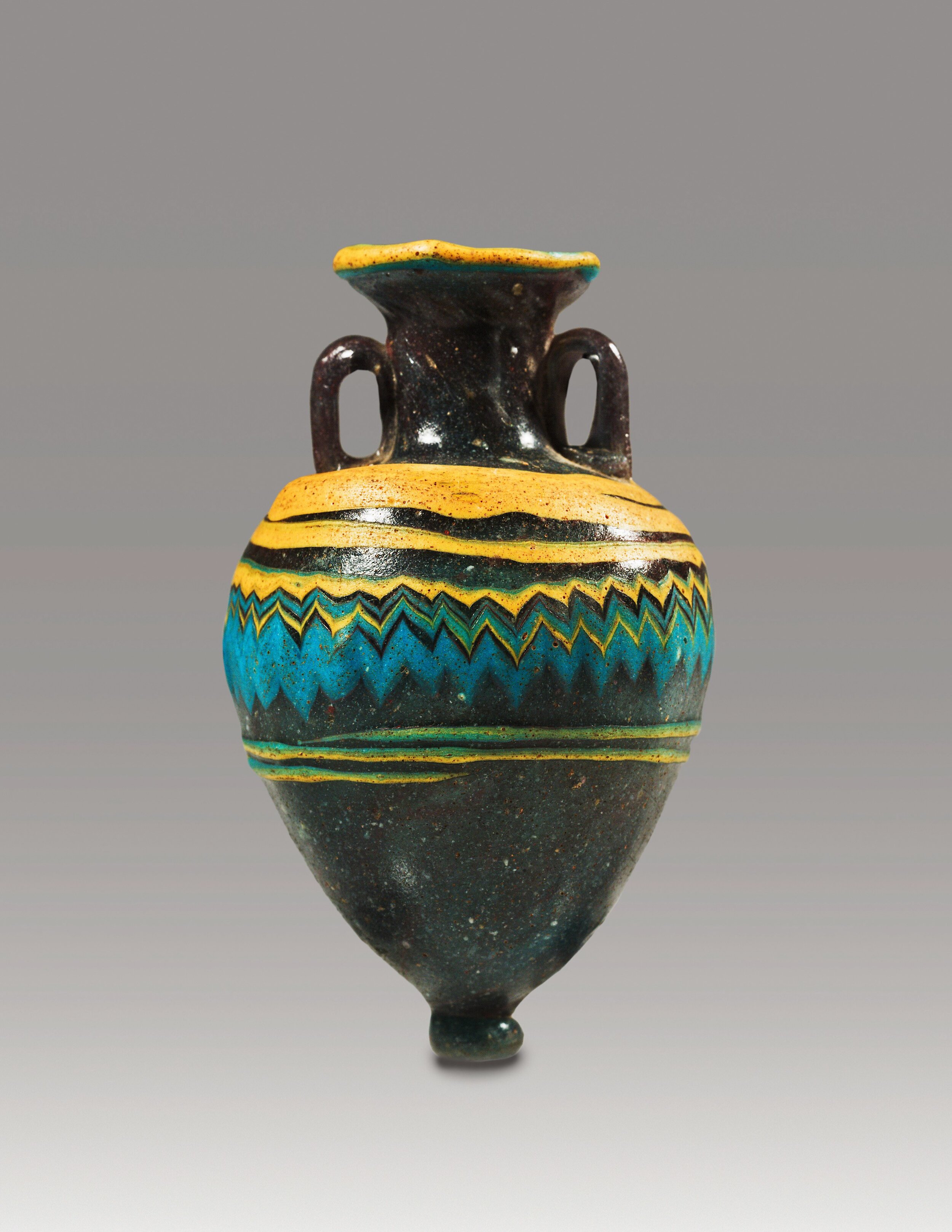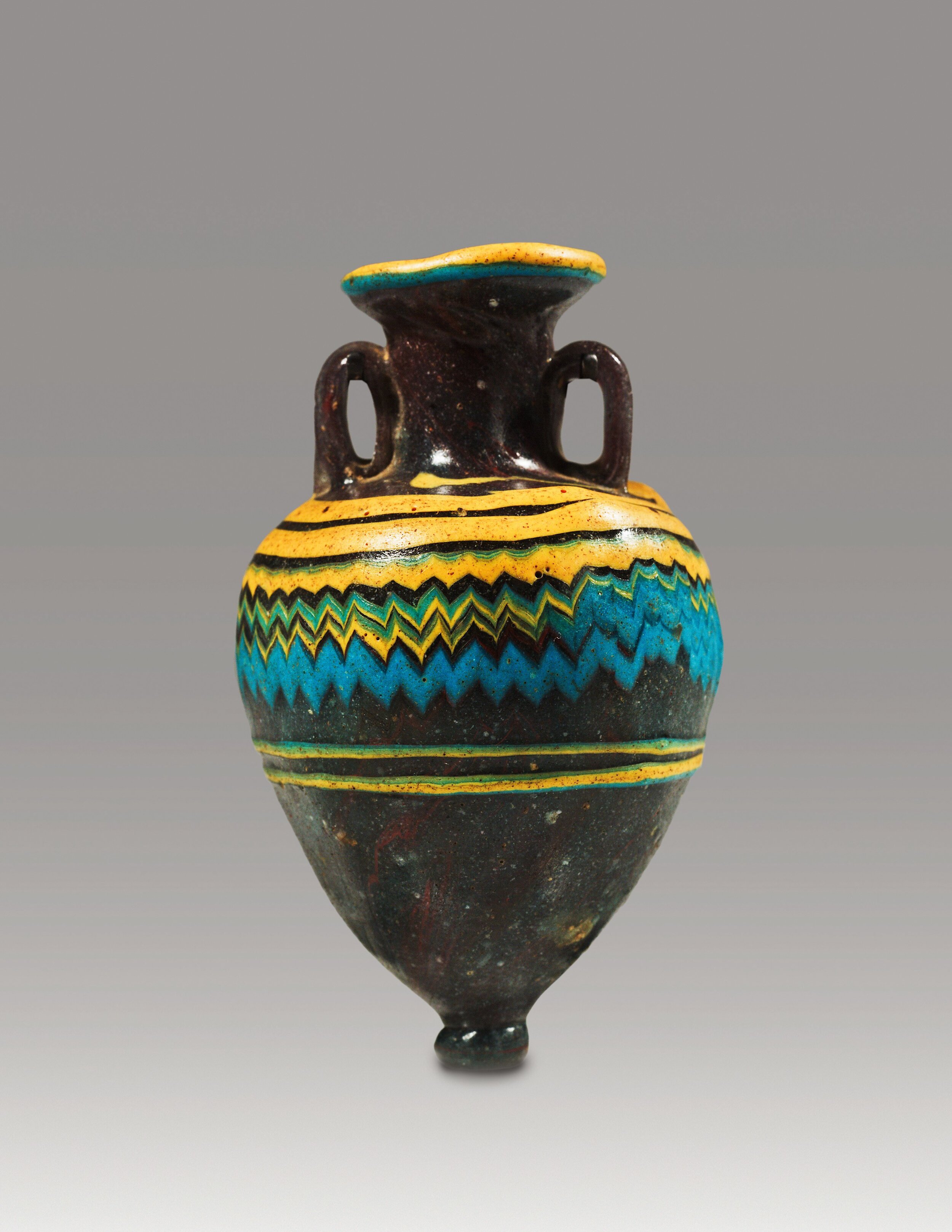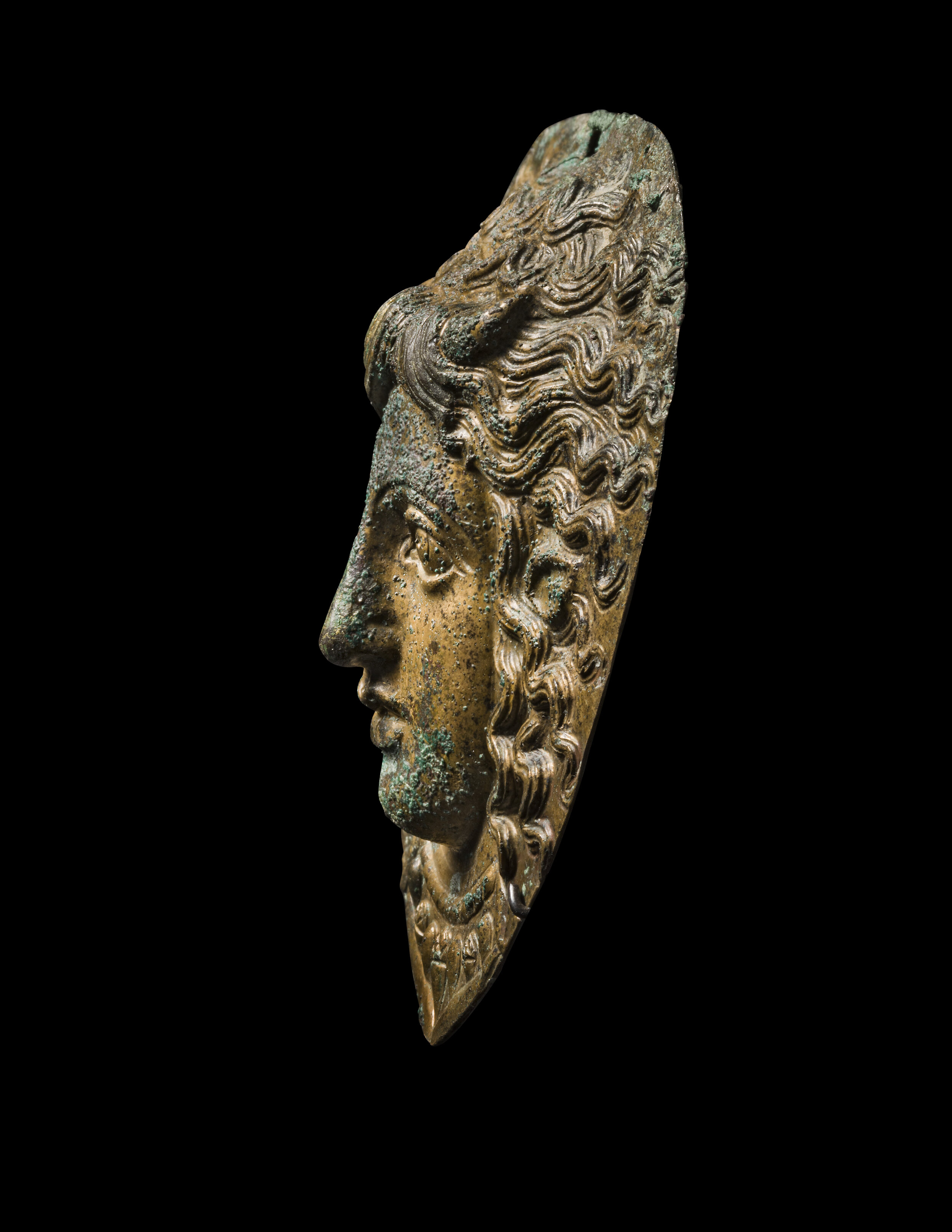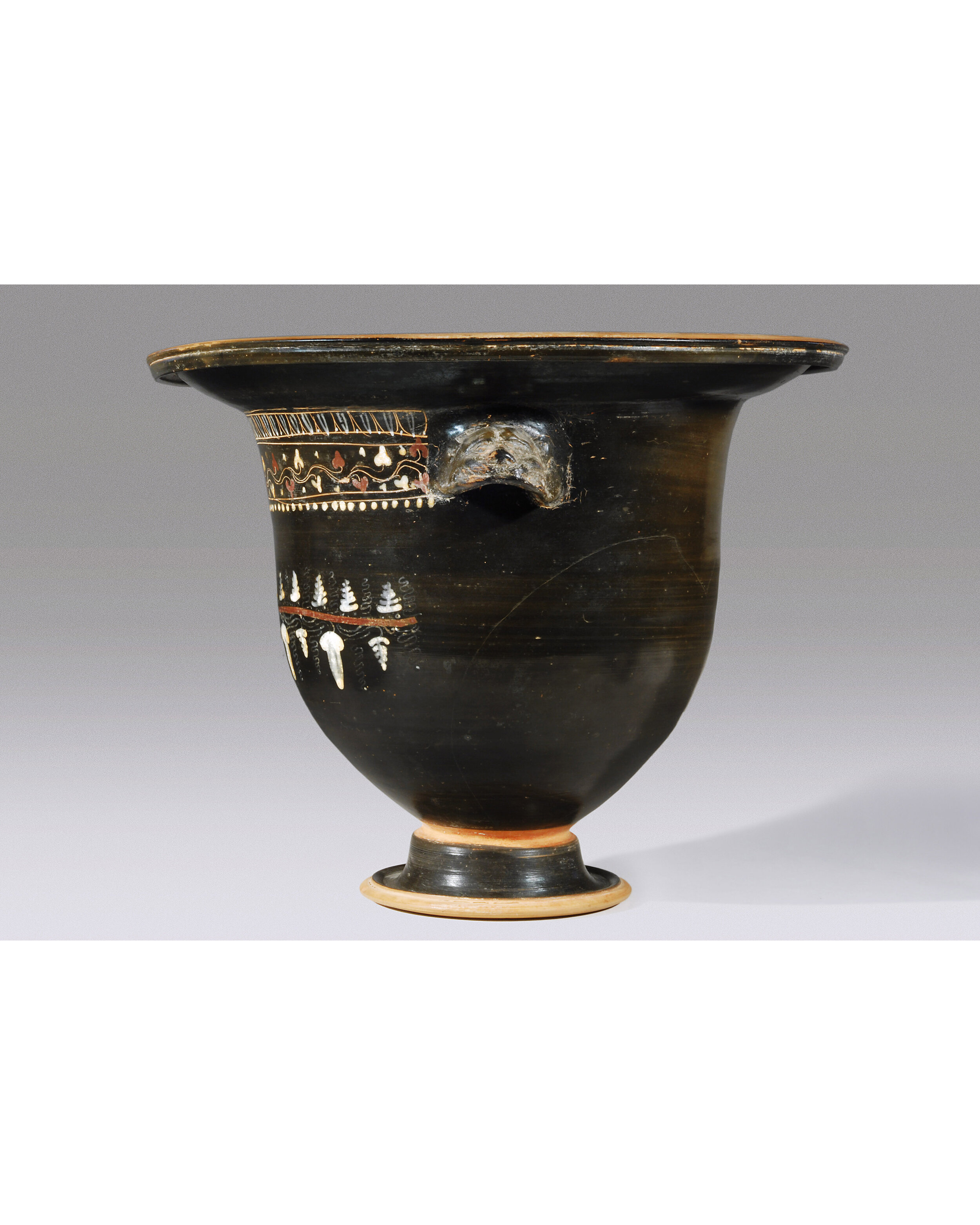Ancient Mycenaean Painted Terracotta Stirrup Jar




Ancient Mycenaean Painted Terracotta Stirrup Jar
Mycenaean, 1300-1200 B.C.
Painted Terracotta
H: 13 cm
Serial: 16914
PROVENANCE: Acquired on the New York Art Market, 2003
The squat, globular body and handles of this stirrup jar are painted with a dark brown slip contrasting with the buff colored clay fabric. The painting of the surface was likely designed to accentuate the stirrup jar’s sculptural form. The body is highlighted with a simple, but carefully painted, lozenge chain, while the curving shoulder is decorated with groups of stacked chevrons. Wide horizontal bands, alternating with areas of light, delicately painted horizontal lines, encircle the vessel and emphasize its full, rounded profile. The top of the false spout is decorated with a central dot surrounded by concentric circles.
Unique in form, stirrup jars were first produced in Crete towards the end of the Middle Minoan Period (1700-1550 B.C.). This unusual pottery type is also known as the “false neck amphora” because what should function as the vessel’s mouth between two handles is a false spout that is capped by a clay disk, the liquid actually pouring from a spout on the shoulder of the vase. The stirrup jar is particularly suited for the transport and pouring of liquids – the false spout and stirrup handles are well designed for holding, while the narrow neck of the true spout allowed for easy control of the liquid’s flow. The small spout of the stirrup jar would also have been easy to seal up for transport and to prevent the scent of perfumed oil from evaporating.









